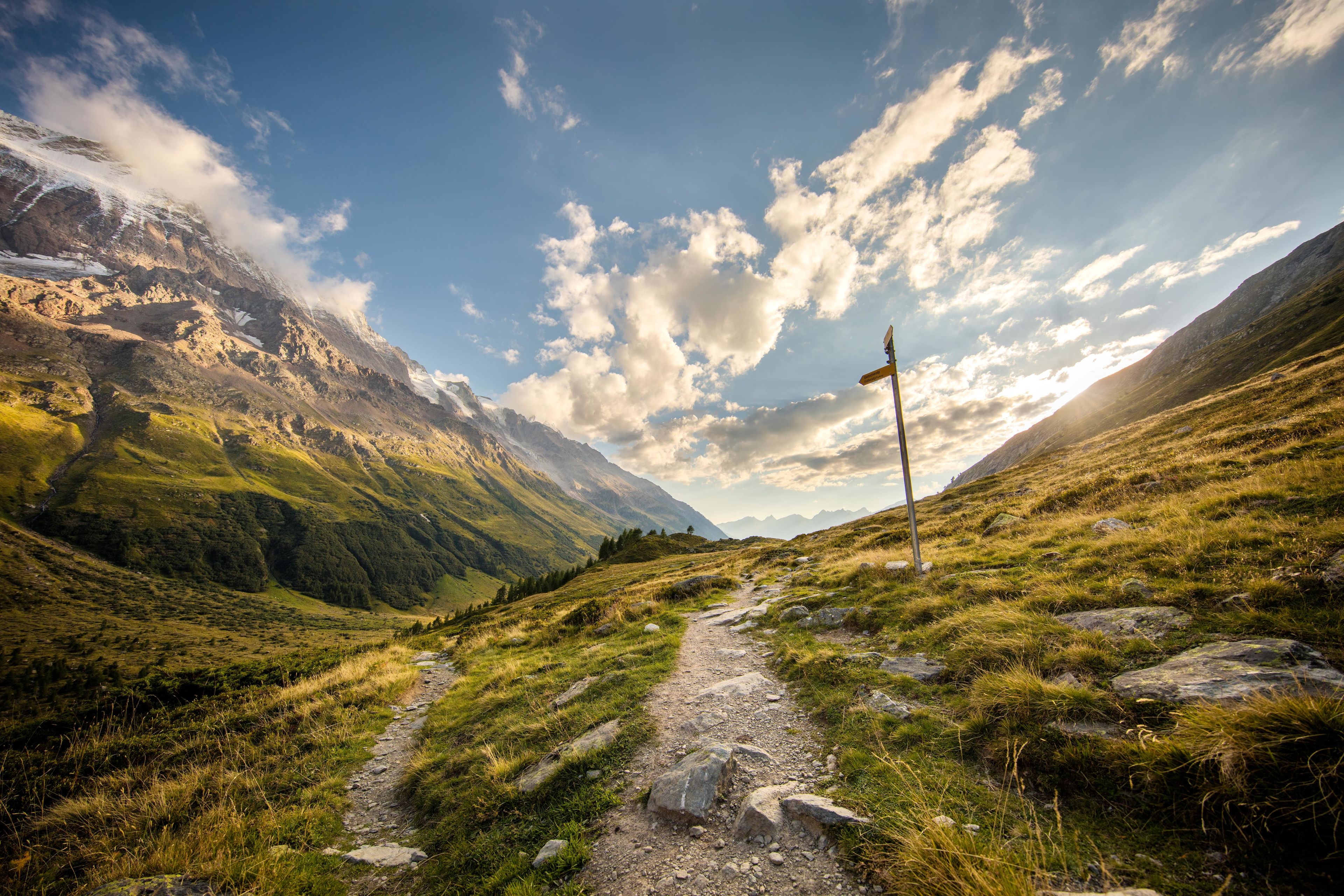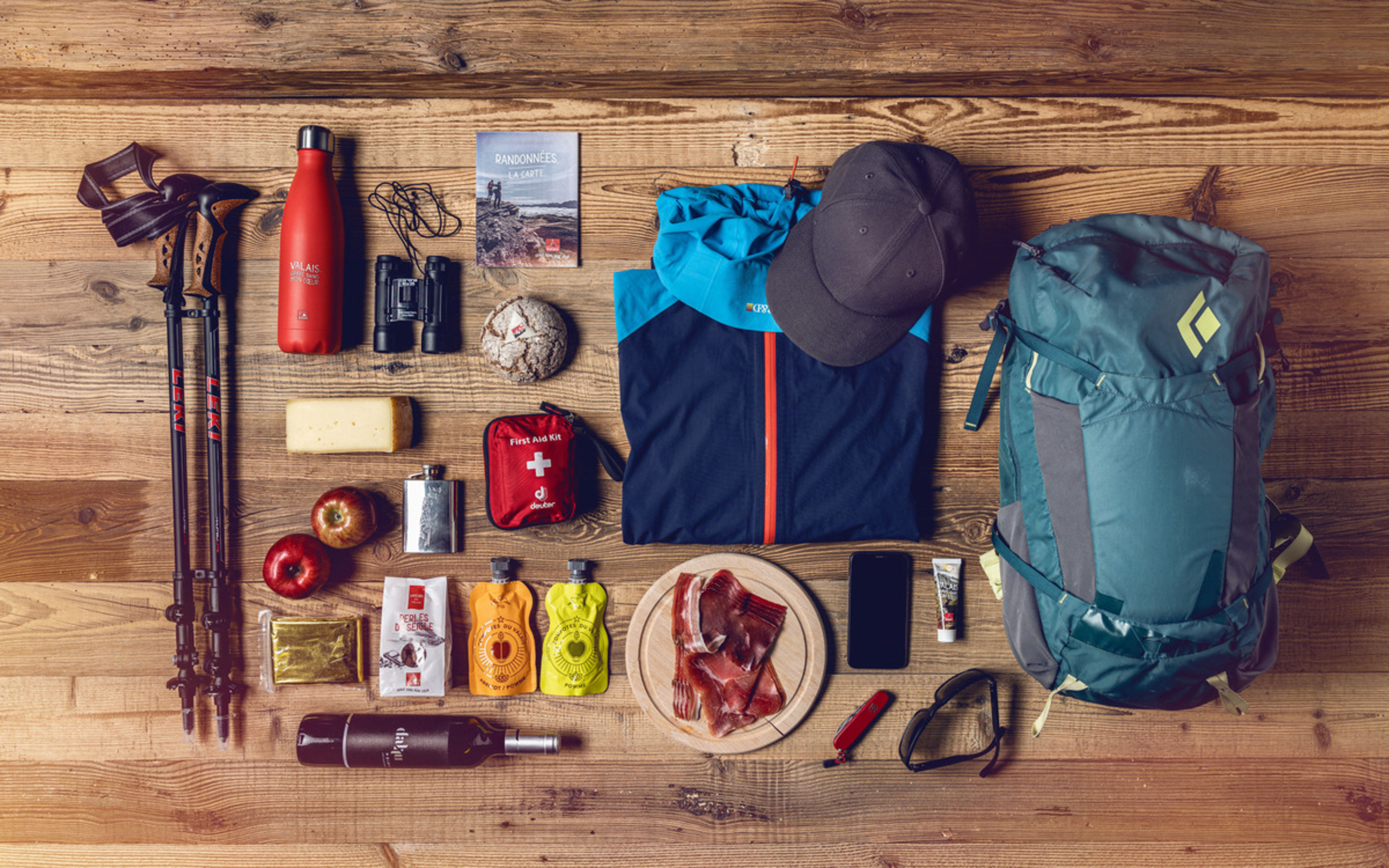Preparing your hike

With almost 9,000 kilometres of signposted hiking trails, the Valais is an endless playground for walkers:
Whether you're hiking to the summits, through larch forests, along the bisses or through the vineyards, there's something for everyone. To make the most of your day in complete safety, make sure you're well-prepared, take all the essential equipment with you to deal with the unexpected, and respect other trail users. Don't forget: the mountains are a place of pleasure to be shared and respected. All that's left for you to do is live your adventure to the full.
Equipment

Security
Plan your trip ahead of time and take into account the level of difficulty of the route, its distinctive features and your physical condition.
Check the weather forecast and estimate how long it will take you to reach your destination.
Find out about the conditions prevailing on the route, especially if you suffer from vertigo.
Make sure the route does not go through any residual snow fields.
Avoid hiking alone and tell your family and friends that you are going on a trip.
Are you well equipped? Have you packed everything you need?
Hydrate regularly.
Protect yourself from the sun even on cloudy days.
Take a break whenever you feel tired.
Along the way, check that you are on schedule so that you keep track of time.
Protecting local fauna
From red deer, chamois and marmots to Herens cows and Valais Blacknose sheep: Valais is home to an exceptional wealth of animals. It is important to be careful not to disturb these essential actors on the Valais stage so that they can flourish peacefully in nature. Here are a few tips to reduce any deleterious effects of human activity on wild fauna and other creatures.
Always behave in a manner respectful of local fauna and flora.
Keep to official marked trails and paths, waymarked “white-red-white” and always close gates after passing through.
Always take your litter home with you, as animals could try to eat it.
Keep your dog on a lead and don’t forget to clean up after it.
If you come across animals, do not feed them.
If you spot young wild animals, do not touch them: just observe them.
If you chance on a lost or wounded animal, inform the gamekeeper immediately.

